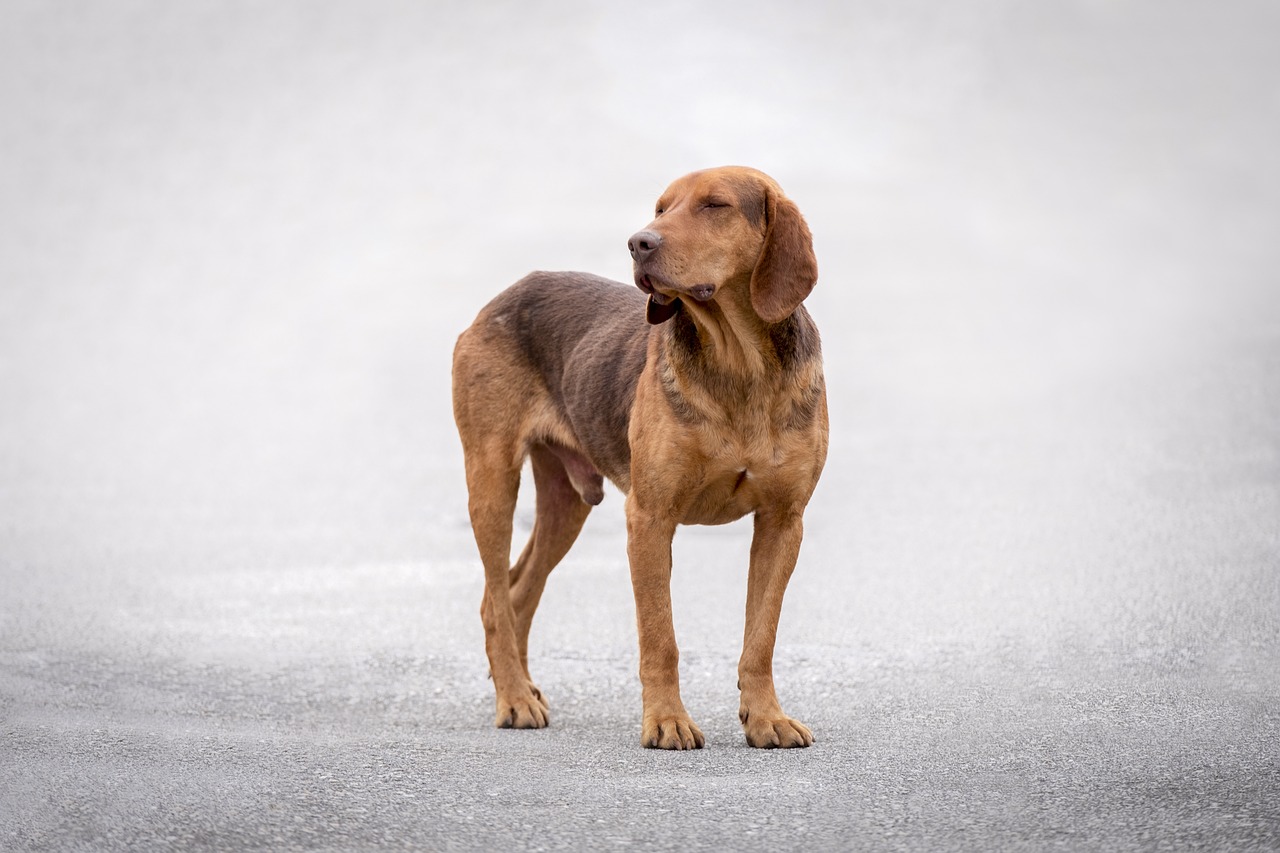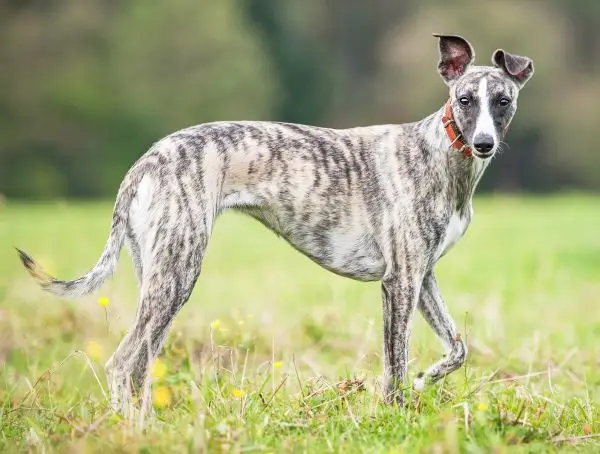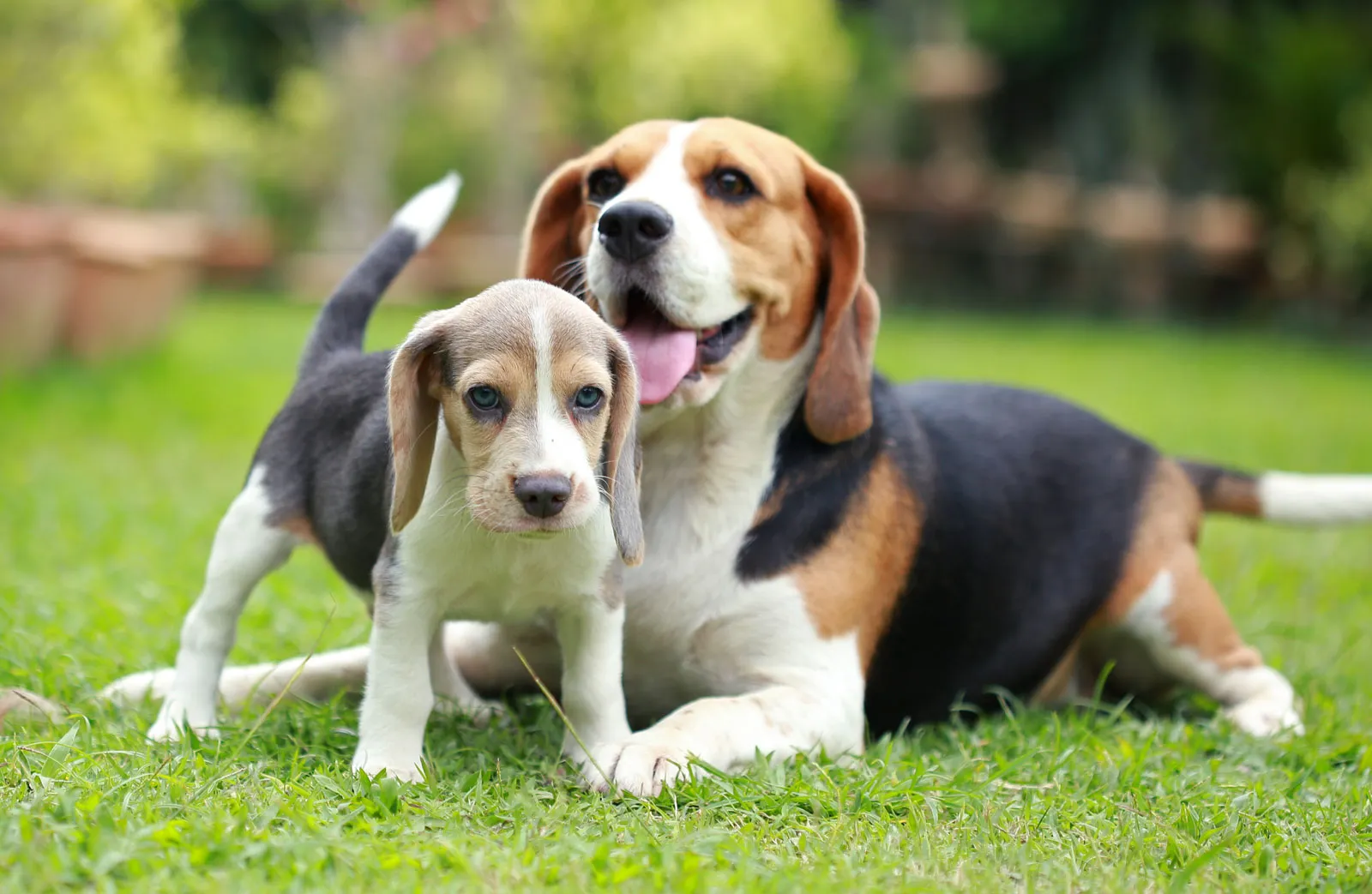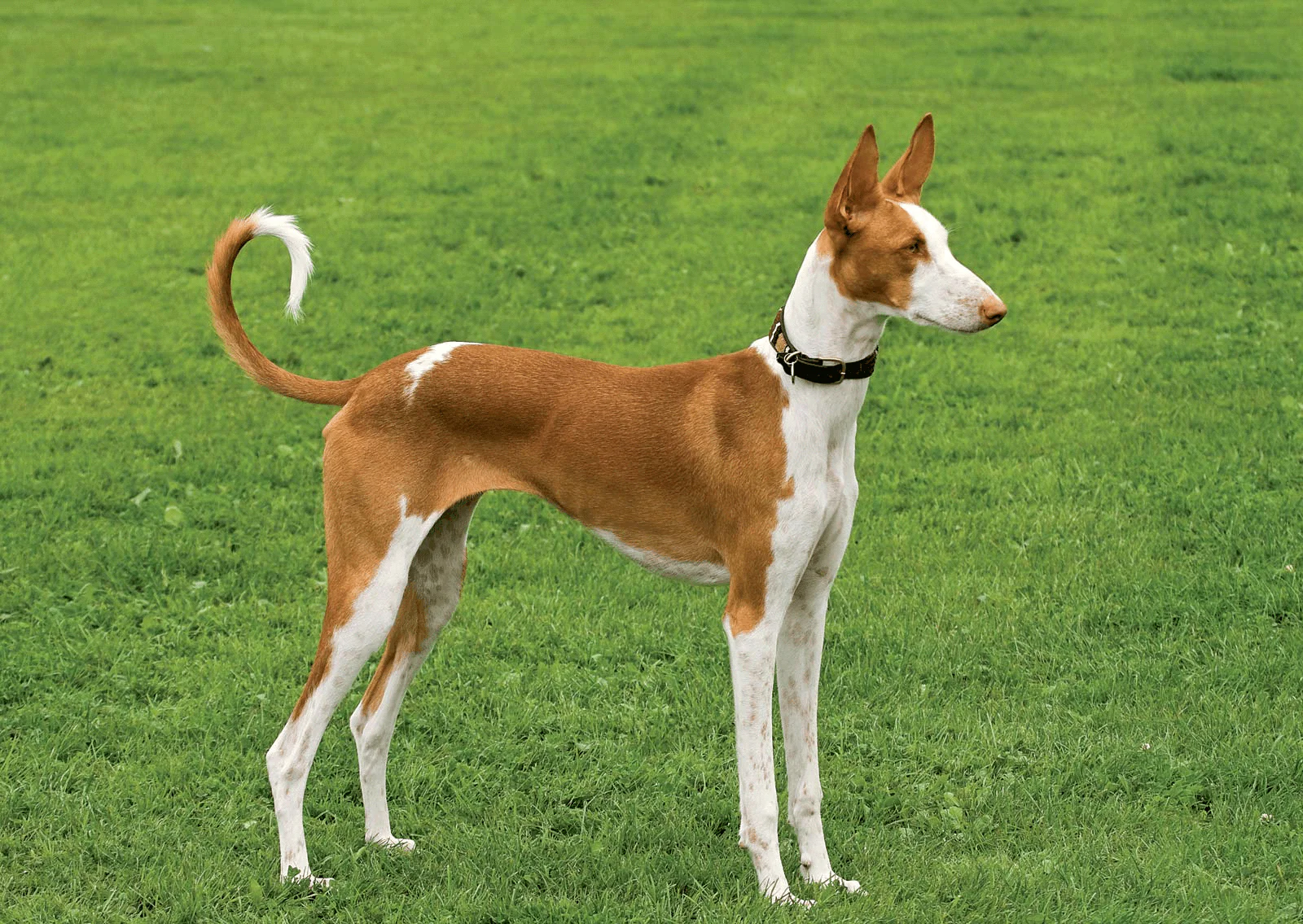My First Encounter with the Magnificent Redbone Coonhound
I’ll never forget the first time I saw a Redbone Coonhound in person. I was hiking in the Smoky Mountains when this stunning, copper-red dog with soulful eyes came bounding up the trail ahead of her owner. She moved with such grace and confidence, her coat gleaming like burnished copper in the dappled sunlight filtering through the trees. The owner noticed my obvious admiration and smiled, “That’s Sadie, my Redbone. Best trail partner I’ve ever had.” After spending just fifteen minutes with this sweet, athletic dog who somehow combined dignified elegance with goofy playfulness, I was completely smitten.
If you’re familiar with “Where the Red Fern Grows,” you already know Redbone Coonhounds through the beloved characters of Old Dan and Little Ann. But these gorgeous red hunting dogs are so much more than literary characters. With their distinctive solid mahogany coats, soulful eyes, and melodious voices, Redbones represent a living piece of American history that continues to charm everyone they meet.
Whether you’re considering adding one of these energetic southern treasures to your family, are curious about their impressive hunting abilities, or just want to learn about a distinctly American breed with deep historical roots, I’ve put together the ultimate guide to Redbone Coonhounds. From their development in the American South to what they’re actually like as family companions (spoiler alert: they’re amazing but NEED their exercise), we’ll cover everything you need to know about these remarkable red hunters. So grab your favorite beverage, get comfy, and let’s dive into the wonderful world of Redbone Coonhounds!
Southern Heritage: The Rich History of Redbone Coonhounds
To truly understand what makes Redbone Coonhounds so special, we need to appreciate their deep roots in American culture and history. Their development tells a fascinating story of American ingenuity and the relationship between people and working dogs.
American Origins and Development
Unlike many dog breeds with European or Asian origins, the Redbone Coonhound is all-American, developed in the southern United States in the late 1700s and early 1800s. The breed’s foundation stock likely came from red foxhounds brought to America by Scottish immigrants, which were then crossed with Irish hounds and possibly bloodhounds to create a versatile hunting dog suited to the unique terrain and game of the American South.
The name “Redbone” has a couple of origin stories. Some say it comes from an early breeder named Peter Redbone, while others believe it simply describes their distinctive red coats. Either way, by the early 1800s, these red hunting dogs were becoming recognized as a distinct type, particularly in Georgia, Tennessee, and the Carolinas, where they excelled at hunting raccoon and other game.
A significant milestone in the breed’s development came when Georgia fox hunter George Birdsong began selectively breeding for the solid red coat we associate with Redbones today. Before his influence, the dogs often had black saddles or other color variations. By the late 1800s, the “Redbone” was established as a distinct breed with consistent traits.
From Working Hounds to American Icons
Redbone Coonhounds were bred primarily as working dogs valued for their versatility. Unlike some hounds specialized for specific game, Redbones proved adept at tracking and treeing various quarry, from raccoons and opossums to mountain lions and bears. Their swimming ability and courage even made them valuable for hunting wild boar in the swampy regions of the South.
While their hunting prowess earned them respect in rural America, Redbones gained wider recognition through Wilson Rawls’ beloved 1961 novel “Where the Red Fern Grows,” which featured a boy and his two loyal Redbone Coonhounds, Old Dan and Little Ann. The book and subsequent film adaptations introduced millions to the breed and cemented their place in American culture.
Despite their historical significance, Redbone Coonhounds weren’t officially recognized by the American Kennel Club until 2009, though they’d been recognized by the United Kennel Club (which focuses more on hunting breeds) since 1902. This late recognition reflects their status as working dogs valued for ability rather than conformation to a show standard.
Today, while many Redbones continue their traditional role as hunting companions, they’re increasingly finding homes as family pets, competing in various dog sports, and even serving in search and rescue roles where their tracking abilities and stamina prove invaluable.
The Redbone Look: That Gorgeous Red Coat and More
Redbone Coonhounds are truly striking dogs with a distinctive appearance that turns heads wherever they go. Let’s explore the physical characteristics that make them so immediately recognizable.
Size, Build, and Overall Appearance
Redbone Coonhounds are medium to large dogs with an athletic build that combines strength with agility. Males typically stand 22-27 inches at the shoulder and weigh between 50-70 pounds, while females are slightly smaller at 21-26 inches and 45-65 pounds.
Their overall appearance conveys power, endurance, and a certain grace. These are working dogs built to cover challenging terrain for hours on end, and their physical structure reflects this purpose. Key physical features include:
- A moderately broad head with a slightly domed skull
- Long, low-set ears that hang in graceful folds
- Deep, expressive eyes with a characteristic pleading or sorrowful expression, typically dark brown or hazel
- A deep chest providing ample lung capacity for stamina
- Strong, clean limbs built for endurance rather than speed
- A medium-length tail carried high when alert
Their movement is fluid and effortless, with a ground-covering stride that allows them to maintain a steady pace for hours. This efficient gait was essential for their work as night hunters who might track game over many miles.
That Beautiful Red Coat
The most distinctive feature of Redbone Coonhounds is undoubtedly their coat color – a rich, solid mahogany red that gives them their name. The shade can range from light copper to deep, dark red, with many Redbones having a slightly darker muzzle and ears. A small amount of white on the chest, feet, or tail tip is acceptable but not preferred in show dogs.
Their coat is short to medium in length, dense, and smooth with a sleek, glossy appearance when healthy. This practical coat protects them from briars and brush while hunting without collecting burrs or trapping excessive heat in the warm southern climate where they were developed.
Grooming needs are refreshingly minimal. Weekly brushing with a soft bristle brush or rubber curry helps remove loose hair and distribute skin oils. They do shed, but not excessively compared to many breeds. Occasional baths when they’re dirty or develop “hound odor” are sufficient – typically every 4-6 weeks for a house dog.
Those long, expressive ears need regular checking and cleaning to prevent infection, as their length limits airflow. Weekly cleaning with a veterinarian-approved ear cleaner helps prevent problems.
Personality & Temperament: The Redbone Heart and Soul
Beyond their striking appearance, what’s it actually like to live with a Redbone Coonhound? Their personalities combine classic hound traits with some distinctive Redbone characteristics that make them special companions.
The Essence of Redbone Character
If I had to sum up the Redbone Coonhound personality in three words, they would be: affectionate, determined, and playful. These dogs bring together a genuinely sweet nature with impressive work ethic and a joyful approach to life.
Affection is perhaps the most defining trait of Redbones as companions. Unlike some hunting breeds that maintain a certain independence, Redbones typically form strong bonds with their people and are not shy about showing it. Many are natural cuddlers who see no reason why they shouldn’t be on the furniture or in your lap despite their size. They generally do well with children, showing patience and gentleness when properly socialized.
Determination is evident in their hunting heritage. Redbones were bred to stay on a scent trail despite distractions, fatigue, or challenging conditions. This single-mindedness served them well as hunters but can present challenges in a pet setting. Once a Redbone decides something is worth investigating – particularly if it involves an interesting smell – they can be remarkably persistent.
Playfulness rounds out their character and often surprises people who might expect a more serious working dog. Redbones typically maintain a puppyish joy well into adulthood and even old age. They enjoy games, have a good sense of humor, and often seem to find life itself entertaining. This playful nature makes them fun companions but also means they need appropriate outlets for their energy and enthusiasm.
The Voice: Melodious and Meaningful
We can’t talk about Redbone personality without mentioning their voice! As hunting hounds, they were bred to be vocal on the trail, allowing hunters to follow their progress by sound when they were out of sight in dense woods or swamps.
Their voice is often described as musical – a distinctive baying howl that’s lower in tone than some other hound breeds. Most Redbones have a range of vocalizations, from excited barks to the classic baying “aroooo” when they’re on a scent or feeling expressive. Many owners describe them as “talkative,” with different sounds for different situations.
This vocal nature can be challenging in suburban environments and is one reason they’re not ideal for apartment living. Training can help manage excessive vocalization, but it’s important to understand that some baying is simply part of who they are – expecting a completely quiet Redbone is unrealistic.
Social Needs and Energy Level
Redbone Coonhounds are social creatures that typically enjoy the company of both humans and other dogs. Their pack hunting heritage has created a breed that generally gets along well with other canines and often benefits from having doggy companions, especially if left alone for periods of time.
Their social nature extends to humans as well – these are not dogs that thrive when isolated in a kennel or backyard. They want to be part of family activities and can become destructive or excessively vocal if regularly left alone for long periods.
Energy level is an important consideration with Redbones. While not as hyperactive as some sporting breeds, they were developed for endurance hunting that might last all night. This translates to a need for substantial daily exercise – a quick walk around the block won’t suffice. Without adequate physical and mental stimulation, their energy can manifest as destructive behaviors, excessive vocalization, or escape attempts.
With proper socialization, many Redbones can learn to coexist with cats, particularly if introduced as puppies. However, their strong prey drive may make them unsuitable for households with smaller pets like rabbits or guinea pigs.
The Incredible Nose: Understanding Their Tracking Abilities
The Redbone Coonhound’s most remarkable feature isn’t their beautiful coat or friendly personality – it’s their extraordinary sense of smell and tracking ability. Let’s explore what makes their scenting prowess so special and how it impacts life with these dogs.
The Science Behind the Scent
Like all scent hounds, Redbone Coonhounds have a significantly more developed olfactory system than humans. While the human nose contains about 5-6 million scent receptors, a hound’s nose packs an estimated 220 million or more! Their brain’s olfactory bulb (the part that processes scent information) is also proportionally much larger than ours.
This gives them the ability to detect scents at concentrations up to 100 million times lower than what humans can perceive. They can distinguish between incredibly similar scents, follow trails that are days old, and sort through a complex landscape of overlapping odors to focus on their quarry.
Their physical features enhance this natural ability. Those long, droopy ears help stir up scent particles from the ground as the dog moves. The loose skin around their muzzle can trap scent particles, and their moist, spongy noses efficiently capture scent molecules from the air.
Tracking and “Treeing”
Redbone Coonhounds were specifically developed for tracking and “treeing” game – following a scent trail until the animal climbs a tree, then baying to alert hunters to the location. This specialized hunting style created dogs with exceptional focus and determination on a scent trail.
What makes Redbones particularly notable among coonhound breeds is their versatility. While many hound breeds specialize in specific game, Redbones have historically been used to hunt everything from raccoons and opossums to bobcats, cougars, and even bears. Their athletic ability, courage, and tenacity made them valuable for hunting challenging game like wild boar in the swamps and forests of the American South.
When on a scent, a Redbone transforms from a friendly companion to a focused hunting machine. They follow the track with their nose to the ground, occasionally lifting their head to catch airborne scent particles. Their famous bay increases in intensity as they get closer to their quarry, culminating in the distinctive “chop” bark when they’ve treed their target.
This remarkable scenting ability makes them excellent working dogs for various scent-based activities beyond traditional hunting. Today, some Redbone Coonhounds serve in search and rescue, detection work, and competitive tracking events.
For pet owners, this incredible nose means that walks will frequently turn into sniffing expeditions, and secure fencing is absolutely essential. Once they catch an interesting scent, their recall reliability can drop dramatically as their hunting instincts take over.
Health and Care: Keeping Your Redbone Thriving
One of the advantages of purpose-bred working dogs like the Redbone Coonhound is their generally good health. As a breed developed for function rather than appearance, they’ve maintained a practical body structure and avoided many of the health problems that plague some more popular breeds.
Common Health Considerations
While generally robust dogs, Redbone Coonhounds can be prone to certain conditions:
- Hip Dysplasia: This developmental condition affects the hip joint and can lead to arthritis and mobility issues.
- Ear Infections: Those beautiful long ears are prone to infections due to poor air circulation.
- Progressive Retinal Atrophy (PRA): An inherited eye condition that can lead to blindness.
- Obesity: Redbones love food and can easily become overweight without proper diet and exercise management.
- Bloat (Gastric Dilatation-Volvulus): Like many deep-chested breeds, they can be susceptible to this life-threatening condition.
Working with a reputable breeder who conducts health testing on their breeding stock can reduce the risk of inherited conditions. Regular veterinary check-ups are essential for catching and addressing health issues early.
Lifespan and Aging Considerations
The average lifespan of a Redbone Coonhound is about 11-13 years, though many live longer with proper care. They typically remain active and energetic well into their senior years, though their exercise needs may decrease somewhat as they age.
As they get older, Redbones may develop arthritis, particularly if they’ve been very active throughout their lives. Weight management becomes even more critical for older dogs to reduce strain on their joints. Many owners find that joint supplements (given under veterinary guidance) help maintain mobility as their Redbones age.
Senior Redbones often maintain their sweet, affectionate temperament while becoming somewhat less driven to follow every interesting scent, often making them more manageable as house pets in their golden years.
Training and Exercise: Meeting Their Needs
Training a Redbone Coonhound requires understanding their unique mindset and providing adequate physical and mental stimulation. Let’s explore effective approaches to bringing out the best in these energetic, scent-driven dogs.
Exercise Requirements: The Key to Happiness
Perhaps the most important thing to understand about Redbone Coonhounds is their need for exercise. These dogs were bred to hunt all night, often covering many miles of challenging terrain. Without adequate physical outlets, they can become destructive, excessively vocal, and difficult to manage.
A minimum of 1-2 hours of vigorous exercise daily is appropriate for most adult Redbones. This should include activities that allow them to run and burn energy, not just leash walking. Suitable exercises include:
- Hiking on trails
- Swimming (many Redbones enjoy water activities)
- Running in a securely fenced area
- Play sessions with other dogs
- Structured activities like tracking, field trials, or lure coursing
In addition to physical exercise, mental stimulation is equally important. Scent work is particularly satisfying for these dogs – activities like tracking, nosework, or even simple “find it” games around the house engage their natural abilities and help tire them mentally.
It’s worth noting that a securely fenced area is essential for Redbone Coonhounds. Once they catch an interesting scent, their hunting instincts take over, and they can run for miles completely focused on the trail. Their recall can be unreliable at best when they’re in “hunting mode,” making off-leash exercise in unfenced areas risky.
Training Approaches: Working With Their Nature
Training a Redbone Coonhound requires patience, consistency, and an understanding of their hound mentality. Here are some strategies that work particularly well:
- Start early: Begin training and socialization when they’re puppies and more receptive to new experiences.
- Use positive reinforcement: Redbones respond much better to rewards than corrections. Find what motivates your individual dog – food rewards work for many, but some may respond better to play or praise.
- Keep sessions short and engaging: These dogs can become bored with repetitive training. 5-10 minute sessions several times a day are more effective than one long session.
- Be consistent but flexible: Consistency in rules and commands is important, but flexibility in training approaches may be necessary as you discover what works best for your individual dog.
- Exercise before training: A tired Redbone is more likely to focus on training than one with pent-up energy.
- Use their nose: Incorporating scent work into training can increase their engagement and motivation.
It’s important to understand that Redbone Coonhounds were bred to work somewhat independently, making decisions on their own while tracking. This created a dog that can problem-solve independently but doesn’t necessarily look to humans for constant direction. Many new owners mistake their independent decision-making for stubbornness or lack of intelligence, when in fact they’re simply operating according to their breeding.
Special Training Challenges
Two aspects of training deserve special attention with Redbone Coonhounds: recall and their vocal nature.
Reliable recall (coming when called) is perhaps the biggest training challenge with this breed. Once they catch an interesting scent, their hunting instincts can override their response to commands. For safety, most experienced Redbone owners never allow their dogs off-leash in unsecured areas, regardless of how well-trained they seem. For those determined to improve recall, long-line training and high-value rewards can help, but expectations should remain realistic.
Managing their vocal tendencies requires consistent training from an early age. While some baying is an inherent trait that shouldn’t be completely suppressed, most Redbones can learn appropriate times and places for vocalization. Teaching a reliable “quiet” command and rewarding calm behavior can help manage excessive baying, though they’ll likely never be silent dogs.
Is a Redbone Coonhound Right for You? Honest Assessment
After learning all about these beautiful red hounds, you might be wondering if a Redbone Coonhound would fit well in your lifestyle. Let’s take an honest look at who should (and perhaps shouldn’t) consider this breed.
You Might Be a Great Redbone Owner If…
A Redbone Coonhound might be right for you if:
- You lead an active, outdoor lifestyle and enjoy activities like hiking, running, or swimming
- You have a securely fenced yard or reliable access to safe exercise areas
- You appreciate their vocalization or live in an area where it won’t disturb neighbors
- You have patience for training a dog with an independent streak
- You’re looking for an affectionate, social dog that forms strong bonds with family
- You understand and can commit to their substantial daily exercise needs
- You appreciate their hunting heritage and natural instincts
- You’re interested in activities that utilize their amazing nose, like tracking or nosework
Redbone Coonhounds can adapt well to family life and generally do well with children, especially if raised with them. They often thrive in households with multiple dogs, benefiting from canine companionship.
A Different Breed Might Be Better If…
A Redbone Coonhound might not be the best choice if:
- You have a sedentary lifestyle or limited time for exercise
- You live in an apartment or area with strict noise ordinances
- You want a dog that’s easy to train with high reliability off-leash
- You’re looking for a guard dog (while they’ll alert with their bay, they’re typically friendly to everyone)
- You have small pets like rabbits or guinea pigs (strong prey drive)
- You’re away from home for long periods regularly
- You’re extremely house-proud (they can be somewhat messy and do shed)
- You want a dog that focuses primarily on you rather than environmental stimuli
Finding Your Redbone
If you decide a Redbone Coonhound is right for you, consider both rescue and reputable breeders:
Coonhound-specific rescues exist throughout the country and often have wonderful dogs needing homes. Many coonhounds end up in shelters because owners underestimated their exercise needs or couldn’t accommodate their vocalization. Adoption typically costs $100-$300 and often includes initial veterinary care.
If purchasing from a breeder, research extensively to find one who prioritizes health and temperament. Reputable breeders conduct health testing on breeding stock, provide proper socialization for puppies, and offer lifetime support to puppy buyers. Expect to pay $500-$1,200 for a well-bred Redbone Coonhound puppy.
The American Redbone Coonhound Association can be a good resource for finding reputable breeders or rescue organizations.
Conclusion: Fiery Red Treasures with Hearts of Gold
There’s something truly special about Redbone Coonhounds. From their rich historical significance to their stunning red coats and sweet, playful personalities, these dogs represent a living piece of American heritage while offering loyal companionship to active families.
Living with a Redbone certainly comes with unique challenges – their substantial exercise requirements, vocal nature, and that independent streak that can make training interesting. But for active people who appreciate them for exactly who they are, these challenges are far outweighed by the joy of sharing life with such an honest, affectionate, and capable companion.
Whether they’re bounding tirelessly alongside you on a wilderness trail or snuggling up beside you (or on you) at the end of a long day, Redbone Coonhounds bring a special energy and warmth to the lives of those lucky enough to know them. They connect us to America’s rural traditions while forming deep bonds with their modern families.
If you decide to welcome one of these fiery red treasures into your home, prepare for an adventure filled with melodious bays, enthusiastic tracking demonstrations, and more love and loyalty than you might have thought possible from one dog. It’s a unique journey – and for the right person, an incredibly rewarding one.




